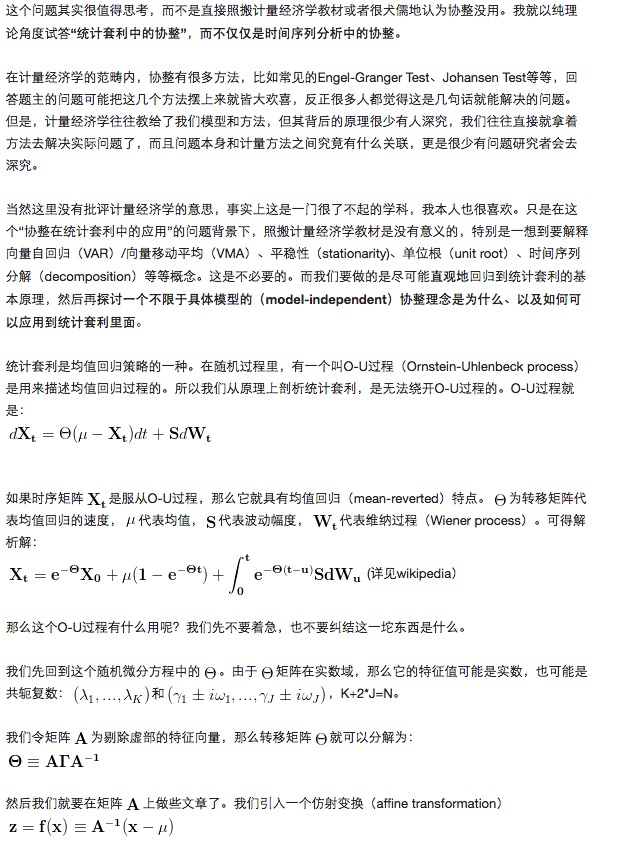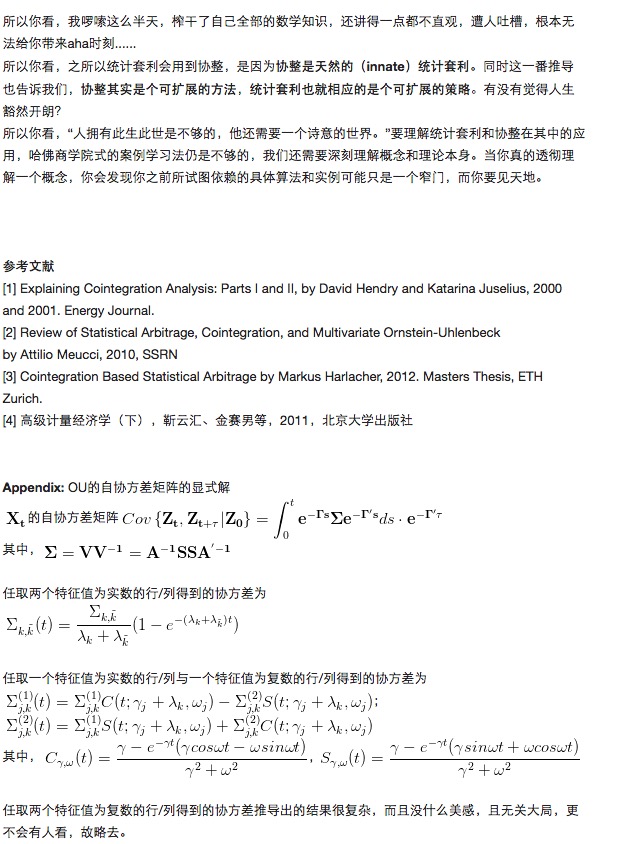What does "co-integration" mean in statistical terms?
Author: Inventors quantify - small dreams, Created: 2016-11-14 10:28:44, Updated: 2016-12-17 14:02:32-
Collaborate
The background: The classical regression model is based on a stable data variable, and for non-stable variables it is not possible to use a classical regression model, otherwise false regression and other problems arise. Since many economic problems are not stable, this presents a great limitation to the classical regression analysis method. Since most time series in practical applications are not stable, it is common to use differential methods to eliminate the instability inherent in the sequence, so that the model can be established after the sequence is stabilized, such as using the ARIMA model.
The following is proposed: In 1987, Engle and Granger proposed the theory of collinearity and its methods to model non-planar sequences. Although some economic variables are non-planar sequences in their own right, their linear combinations may be even sequences. This linear combination is known as a collinear integral equation and can be explained as a long-term stable equilibrium relationship between the variables.For example, consumption and income are non-steady time sequences, but they are correlated. If they are not, long-term consumption may be higher or lower than income, so consumers will irrationally consume or accumulate savings.Assuming that some economic indicators are linked by an economic system, then in the long run these variables should have an equilibrium relationship, which is the basic starting point for building and testing models. In the short run, these variables may deviate from the mean value due to seasonal influences or random interference. If this deviation is temporary, then over time it will return to equilibrium; if this deviation is persistent, it cannot be said that there is an equilibrium relationship between these variables. The concept of collinearity is a powerful one. Because collinearity allows us to draw balanced or even relations between two or more sequences. For each sequence individually, the matrix of the sequence, such as the mean, the square, or the collinear, may be non-equilibrium and change over time, while the sequence of the linear combination of these sequences may be non-temporal.
Definition of the term: The interval between the fractions of the k-dimensional vector Yt = (y1t, y2t,...,ykt)
is called the d, b-step covalent, written as Yt CI (d, b), if satisfied: (1) y1t, y2t,..., yykt are d-dimensional integers, i.e. Yt I (d), requiring that every quotient of Yt is yit I (d); (2) There exists a nonzero vector β= (β1, β2,..., βk) such that β Yt I (d-b), 0 ≤ d, Yt is the coordinate, and β is the coordinate vector. Conditions: The conditions for the existence of a co-ordinate relationship are that the time sequences {x} and {y} of the two variables can only be co-ordinate if they are the same class-only integer sequence, i.e. I (((d)). This does not apply to the co-ordinate of multiple variables. Therefore, before testing the co-ordinate relationship of the two variables y and x, the two time sequences {x} and {y} are tested for stability with the ADF unit root test. To find out how to verify that a sequence is symmetrically unstable, search for the unit root test.
-
The following is from knowledge:



I know it.
- Interesting investment math!
- Math and gambling (1)
- Rethinking the Uniform System
- The Kelly formula for positioning control of the lever
- The trend trading of an old bird, the idea of a quantitative trading system
- Bitcoin High Frequency Strategy Ideas to be recommended
- The three secrets of keeping a quantized model alive
- High-frequency trading strategies based on machine learning
- 2.9 Debugging in the run of the strategy robot (JS - the usefulness of the eval function)
- In fact, past prices don't really affect the future.
- 3.4 Complement the strategic framework to get the robots up and running!
- 3.1 Template:Repeatable code _ Directory of digital currency spot transactions
- 2.7 Use of indicators
- 2.5 Interface showing API policy interaction
- 2.4 Get order information, cancel orders, and get all unfinished orders
- 2.3 List of market prices
- 2.2 Lower price lists
- 2.1 Use the API to access account information, market data, K-line data, and market depth
- Other functions
- 1.3.4 Robots and strategies